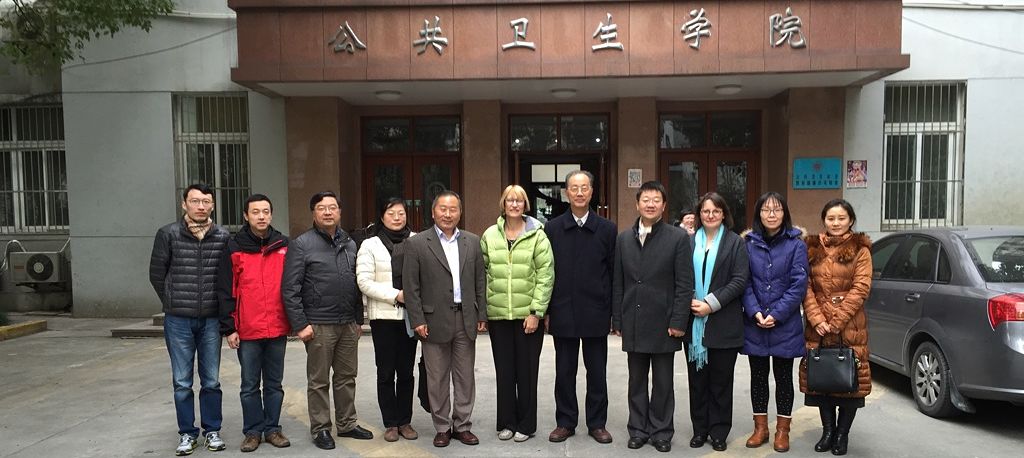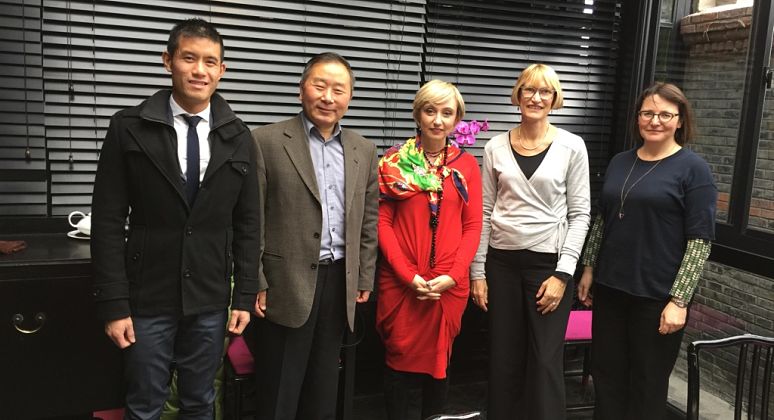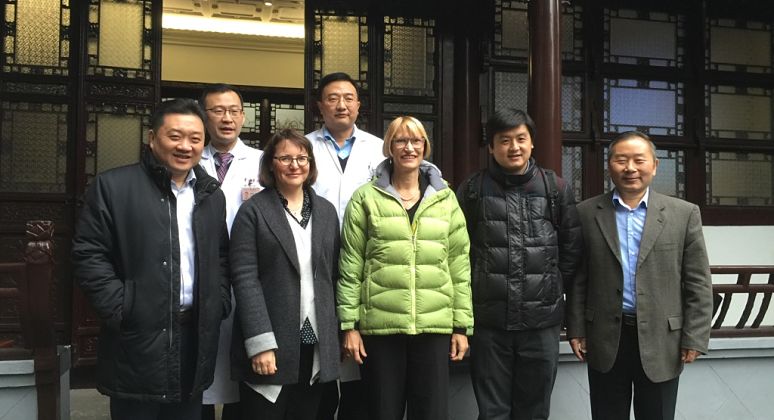A small team of cardiovascular disease (CVD) researchers from New Zealand ended their summer holidays early to head to Shanghai in a wintry northern hemisphere January.
Professor Vicky Cameron of the University of Otago Christchurch, who leads the Healthier Lives programme on equitable risk prediction for cardiovascular disease and diabetes, was accompanied on this visit by Dr Katrina Poppe from the University of Auckland, who brings expertise in statistical analysis of big data to the risk prediction programme and Dr Hu Zhang, Research Collaboration Manager for the New Zealand-China NCD Research Collaboration Centre (NCD CRCC).
A busy 5-day programme of visits was generously co-ordinated by the NZ Consulate in Shanghai and the Science and Technology Commission of Shanghai Municipality. This began with interesting and productive meetings with the Department of Epidemiology and the Department of Preventative Medicine at the School of Public Health of Fudan University, which generated lots of ideas from both sides for potential collaborations.
In the following days, the team visited a number of health facilities, including Xietu Community Hospital, Huashan Hospital, Shanghai Mental Health Centre and Ruijin Hospital. They watched a lively health education session run by three GPs teaching a group of patients about self-care, learned about the structure of the Shanghai three tier medical system, and had a fascinating discussion with a young doctor trained in Chinese Traditional Medicine procedures about how these can be interwoven with western therapy if the patient requests this. In particular, the NZ visitors were impressed by the data available to Chinese researchers from the extremely large population cohorts, with rich clinical and lifestyle information and rigorously collected biobank of samples.
There was plenty of goodwill and many exciting opportunities to follow up on. However one proposal emerged from the meeting with the Fudan Department of Epidemiology as an immediate possibility. There is strong interest on both sides in working on a Chinese-specific risk equation for CVD and diabetes, paralleling the work currently being done in the Healthier Lives National Science Challenge for Māori, Pasifika and Indian ethnicities. There are exciting prospects for taking the equation back to China to validate it in a very large population cohort and possibly also in future to work on jointly validating biomarkers for incident cardiovascular events.




